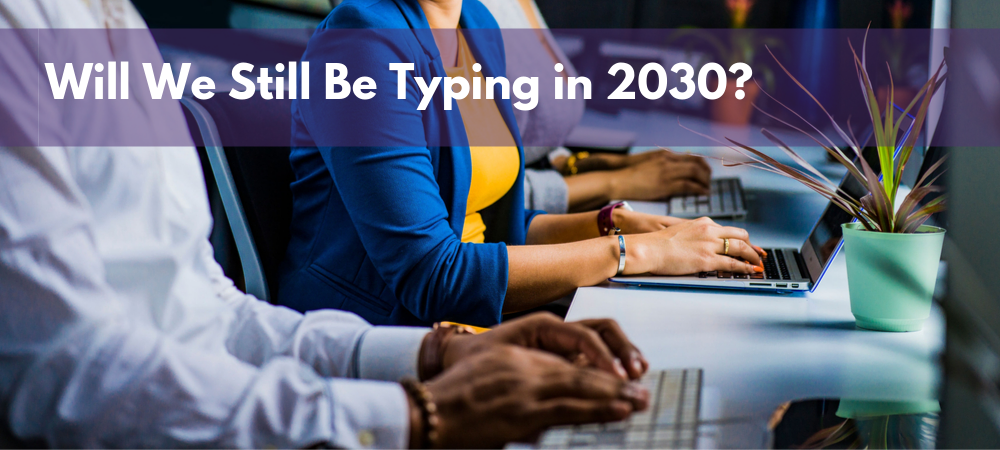
Long gone are the days of manually clocking in and clocking out at the office. With the arrival of computers and the internet, the digitalization of how we work seems as though it happened overnight. Game-changing technology showed up at our doorstep with the first mass-marketed desktop computer with keyboards for typing in the late 60s and has been on a consistent marathon of progress ever since.
Perhaps you even remember the enthusiasm with which typing was met?
Right from the days of typewriters, the skill of typing already held great value for a number of professions. So much so that speed typing competitions have been around for decades with presence on an international scale. The tapping of number and letter keys became the easiest way to translate human speech into text.
Nowadays, with the shift towards hand-held devices, the typing skill set has been adapted to this current more popular use. However, with the rise of speech recognition technology, typing is beginning to take a backseat to voice command. While still not yet 100% accurate, voice recognition technology is experiencing an exponential uptake by users around the world.
What’s on the horizon for 2030?
For starters, global internet usage is forecast to reach 80% of the world’s population, up 23% from today. This expected surge in online users signals great market growth for all kinds of smart devices, including home devices such as Google Home and Amazon’s Echo. What’s more, Gartner predicts that by 2020, 30% of web searches will be performed without a screen. A decade later, we can imagine how much less relevant and in-demand keyboards and keypads will be.
Artificial Intelligence has already made great progress in recent years and is projected to do so at an even faster rate. The technology is forecast to move from basic level functionality to more complex decision-making capabilities. In this way, the requirement for input from humans as users will not be as high as it is today. Advanced AI systems will be robust enough to make predictions around user behavior and sign off on any pre-approved decision making. With the Internet of Things on the rise, an example of this could be your fridge ordering more milk and eggs on your behalf once it detects that they will be finished before your next food shop.
What’s more, technology is increasingly moving in the direction of being wearable, which means its cues to respond will crossover into the world of biometrics and external stimuli. Imagine a smart t-shirt that loosens and tightens its fibers to control airflow according to your body temperature. You’ll no longer have to type to find out the weather forecast before deciding what clothing to wear. Intelligent apparel will be online and interconnected with access to a wealth of data from which to draw sound conclusions without much input from us, if at all.
Where does all this leave transcription?
While it’s plain to see that typing is increasingly set to lose its relevance, it doesn’t signify the end of transcription. It simply means a new era is upon the profession that relies more on speech and voice recognition technology.
At TranscribeMe, we already work with state-of-the-art AI modelling to produce highly accurate transcriptions using automatic speech recognition. Our hybrid transcription service combines computer-generated transcripts with the quality assurance of skilled transcriptionists to guarantee full verbatim style. Due to nuances in speech and dialect that are not always picked up by machines, discrepancies that require human editing using a computer screen and keyboard.
However, as technology advances in this space, the need for human modification via typing in transcription will quickly disappear. Given the current technological landscape, we can easily imagine that a combination of speech and simple hand gestures (or even eye movements) will be all that transcriptionists need to edit automated transcriptions. This will replace the need for bulkier, redundant equipment such as keyboards or keypads. That said, no one can be sure exactly what can be expected by 2030 as a number of factors influence progress, but time will surely tell.
Want to make the most of the very latest in speech-to-text technology for accurate and affordable machine transcription with our express delivery? Contact us for more information on our best-in-class services that keep raising the bar.